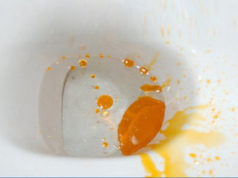The nervous supply to a particular muscle enables the normal functioning of the muscle. Hyporeflexia is the condition that is characterized by absence or inadequate nervous supply to your muscles.
This can bring about a particular complication and malfunction of the muscles. Find out what this condition is, causes, symptoms and treatment
Hyporeflexia definition
This is a condition that is characterized by reduction or absence of reflex to a particular stimulus. This condition is characterized by the absence of the nerves that run down the spinal cord all the way to the extremities.

The condition is associated with lower motor neuron. This is defined as lack of or inadequate nerves that run through the spinal cord to the extreme areas of your body.
A reflex is usually an involuntary motion or action when a particular stimulus is applied. The reflex is governed by receptors that are called the stretch receptors located in the muscle, once a signal is sent down the spinal cord.
In most cases, this condition is known to be a pointer to some key problems at the spinal cord. Its onset is witnessed when you begin to have a reduction in the reflex when a particular stimulus is applied.
This condition forms one of the many neurological disorders. Its discovery comes from the routine checks and evaluations that point out the extent of the medical condition impending.
Hyporeflexia causes
There are a number of medical conditions that are responsible for hyporeflexia. The following are just some of them although there could be more:
Injury to the spinal cord/ spinal cord shock
This is the commonest. This is when there is an injury caused on the spinal cord or when the spinal cord fails to function in a systematic manner. The hyporeflexia is a stage of the progression of the shock to the spinal cord.
With time, this advances to be hyperreflexia. The hyporeflexia is relatively brief. The progression of hyporeflexia to hyperreflexia is a mechanism of the spinal cord to recover.
Myopathy
This is a term that is used to refer a general disease state of the muscles. You can acquire this condition right at birth or even later in life. When it occurs, there is a general weakness of the muscle, weakness of your limbs and weakness after exertion.
Neuropathy
This is a term that refers to the damage that happens to your nerves especially the peripheral nervous system (pns). It might be caused by diseases of the nerves as well as the side effects of some systemic diseases.
For you to know that this condition has set in, you will have sensory loss, decrease in the reflexes of the tendons, muscle weaknesses, a lot of painful cramps and degradation of the bone.[1]
Magnesium sulfate medication
Intake of this medication shows hyporeflexia as a side effect. The condition is called magnesium hyporeflexia. It is in most cases diagnosed with pre-eclampsia and toxicity from various agents.[2]
Spondylosis
This is disease that is characterized by the degeneration of your joints. This is in most cases as a result of the aging process and wear and tear in the course of time.
The changes as a result of the degeneration can lead to the compression of the nerves of the spinal cord. After the onset, you will have the following symptoms:
- Weakness of all your extremities
- Headaches
- Pain on the back
- Pain of the neck
This condition begins at around 30 years of age. The symptoms are however less likely to appear until the age of 40 years.
Friedreich’s ataxia
This is an inherited condition. It is characterized by the consistent loss of voluntary muscle coordination as well as heart enlargement. You are likely to have some difficulty walking, deformities of your feet, clubfeet and loss of reflexes in your knee.
Radiculopathy
This is as a result of the compression or irritation of the nerves as it leaves the spinal cord. This condition comes with pain, tingling, numbness and weakness of both the arms and legs.
The use of conservative treatment is considered the best option. This condition is likely to occur on any part of the spinal cord but the commonest part is the lower part of the spine.[3]
Guillian Barre syndrome
This is a medical condition in which there is acute peripheral neuropathy in which hyporeflexia is a consequence. In this case, hyporeflexia is shown by motor axonal neuropathy.
The hyporeflexia is thus a clinical presentation of this condition. This is according to the Journal of Pediatric Neuroscience.[4]
Polio
This is a viral disease that is rare currently courtesy of vaccinations. It presents with mild symptoms of fever, some headache, sore throat and vomiting. In this condition, the virus adversely affects the nerves impairing their functioning.
Tabes dorsalis
This condition is simply put, syphilis of the spinal cord. The nerves in the spinal cord are badly destroyed by the Treponema pallidum, the causative of syphilis.
It is shown by the degeneration of the sensory nerves and pains around the trunk. Further, you will experience an unstable gait as well as incontinence and even impotence.
This condition presents about 15 to 20 years after the infection has occurred. You will have sharp pains in lower parts of your extremities.
Hypothyroidism
If you present with hypothyroidism, then hyporeflexia is also a possibility. This is common if you are female of 60 and more years. It is also more likely if you take medications like levothyroxine sodium. You could also get it if you have a cervix carcinoma.
Symptoms
This condition presents with a number of symptoms that are very evident. Generally, you will have a diminished ability to respond to particular stimuli when applied to some areas of your body like the elbows and knees.
This condition is therefore not a disease because it could be a sign a sign or symptom that indicates an underlying serious medical condition.
There are some receptors in your muscles which are called stretch receptors that govern their movement.
There are areas of your body that constitute what is known as the reflex arc, where the levels of reflex can be tested. These areas include the biceps, triceps and cervical nerves.
By mention, the following are some of the symptoms that are brought about by hyporeflexia:
- There is a general lack or absence of sensory reflexes.
- Fatigue or malaise. This is because the muscles do not have adequate innervation to allow them to function properly.
- There will be an appearance of pink to even violaceous scaly areas on your knuckles, elbows and even the knees.
- Your levels of consciousness will remain largely normal throughout the entire time.
- There is a general weakness of your muscles especially on the extreme areas
- Your urine will be dark colored. This is an indicator that you have the component myoglobin in the urine. In addition, you are likely to have fever.
Diagnosis
When this condition occurs, it should be attended to with an immediate effect. Your doctor in most cases will treat it on the spot.
Once admitted, your doctor will carry out a thorough examination and then run a diagnostic test.
The tests are able to test the exact cause of the condition as they rule out the likelihoods of other conditions.
Treatment
Treatment of this condition should be considered an emergency. The emergency treatment is aimed at lowering the blood pressure and then eliminate any stimuli that are linked to the reaction.
The best treatment always begins with having the right and best diagnosis of the spinal cord done.
This is so because the treatment depends majorly on the underlying causes. The following are some of the emergency measures that you can take:
- Moving to a sitting position. This is important to facilitate and initiate blood flow to your feet and the limbs
- Removing any tight clothing. This is important to allow free flow of blood.
- Doing away with any other likely causes or triggers of the condition. These include bounds of air blowing on your skin or some objects in touch with your skin
- Administration of vasodilators or other drugs that are aimed at bringing the blood pressure under greater control.
The treatments could also be individualized based on the particular cause. For instance, the treatment of spondylosis could vary based on how severe it is, if there is presence of other medical conditions or even age and medical history.
This condition is not easily cured but the symptoms can be lessened by among other activities as physical examination, combination of medication and exercise.
The hyporeflexia that is brought about by excessive pressure on the nerves could be relieved by carrying out a surgery. The surgery releases or alleviates pressure. When the condition is caused by the Guillain-Barre syndrome, then physical therapy, lifestyle modification and medications are necessary.
What is more pronounced is that there is no single treatment that can effectively deal with hyporeflexia. There is a combination of treatment options that is best suited to help in this case.
The main aim of the combination is to be able to effectively deal with the underlying conditions, which are directly linked to hyporeflexia.
Sources
[1] http://www.rightdiagnosis.com/n/neuropathy/symptoms.htm#symptom_list
[2] http://patientsville.com/magnesium/hyporeflexia.htm…mg
[3] https://www.medicinenet.com/radiculopathy/article.htm#radiculopathy_facts
[4] https://www.ncbi.nlm.nih.gov/pmc/articles/PMC3296413/



